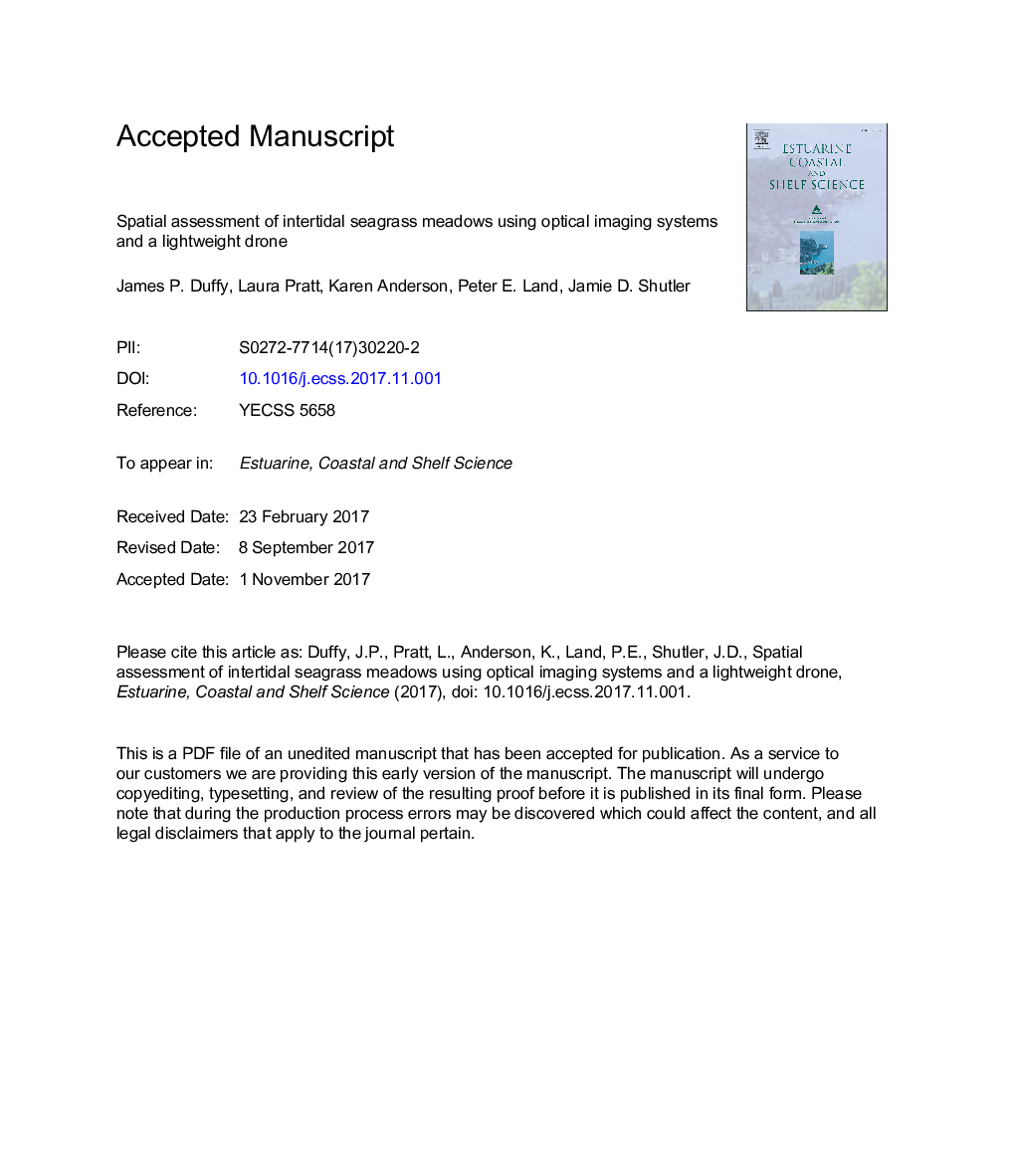| Article ID | Journal | Published Year | Pages | File Type |
|---|---|---|---|---|
| 8885088 | Estuarine, Coastal and Shelf Science | 2018 | 32 Pages |
Abstract
Seagrass ecosystems are highly sensitive to environmental change. They are also in global decline and under threat from a variety of anthropogenic factors. There is now an urgency to establish robust monitoring methodologies so that changes in seagrass abundance and distribution in these sensitive coastal environments can be understood. Typical monitoring approaches have included remote sensing from satellites and airborne platforms, ground based ecological surveys and snorkel/scuba surveys. These techniques can suffer from temporal and spatial inconsistency, or are very localised making it hard to assess seagrass meadows in a structured manner. Here we present a novel technique using a lightweight (sub 7Â kg) drone and consumer grade cameras to produce very high spatial resolution (â¼4Â mm pixelâ1) mosaics of two intertidal sites in Wales, UK. We present a full data collection methodology followed by a selection of classification techniques to produce coverage estimates at each site. We trialled three classification approaches of varying complexity to investigate and illustrate the differing performance and capabilities of each. Our results show that unsupervised classifications perform better than object-based methods in classifying seagrass cover. We also found that the more sparsely vegetated of the two meadows studied was more accurately classified - it had lower root mean squared deviation (RMSD) between observed and classified coverage (9-9.5%) compared to a more densely vegetated meadow (RMSD 16-22%). Furthermore, we examine the potential to detect other biotic features, finding that lugworm mounds can be detected visually at coarser resolutions such as 43Â mm pixelâ1, whereas smaller features such as cockle shells within seagrass require finer grained data (<17Â mm pixelâ1).
Related Topics
Physical Sciences and Engineering
Earth and Planetary Sciences
Geology
Authors
James P. Duffy, Laura Pratt, Karen Anderson, Peter E. Land, Jamie D. Shutler,
